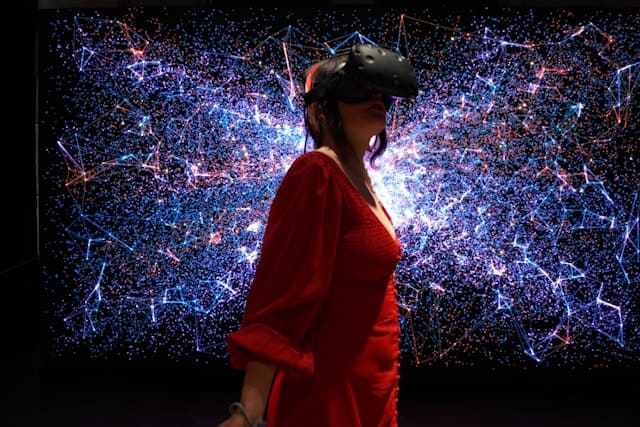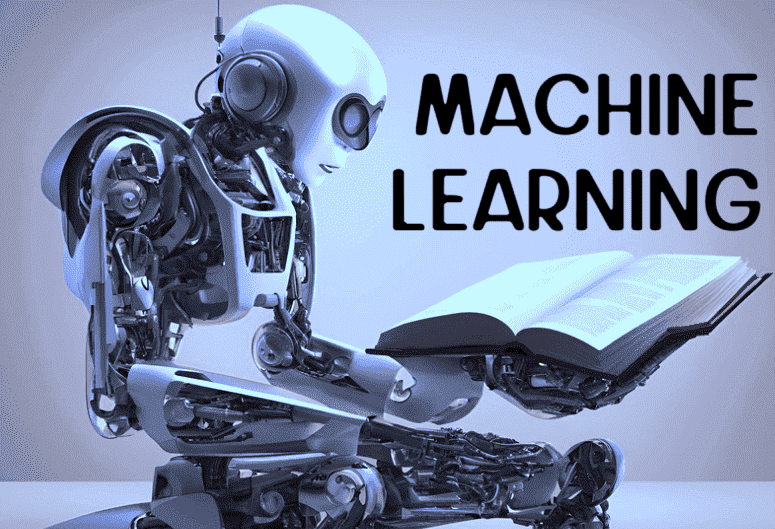
Overview:
What is the metaverse? To comprehend this, we need to grasp a concept that was once confined to the realms of science fiction but is rapidly becoming a tangible reality in our digital landscape. Envisioned as a collective virtual shared space, the metaverse represents a convergence of virtual reality (VR), augmented reality (AR), social networking, and digital economies, creating an interconnected network of immersive digital environments. Here, users can seamlessly traverse between different virtual worlds, interact with each other in real-time, and engage with digital content and experiences in ways previously unimaginable.
As technological innovation continues to push the boundaries of what’s possible, the question what is metaverse holds the promise of transforming how we live, work, and play in the digital age. From virtual meetings and collaborative workspaces to immersive gaming experiences and virtual shopping, the metaverse offers a plethora of opportunities for creativity, innovation, and exploration. With its potential to reshape industries, redefine social interaction, and unlock new forms of expression, understanding and embracing the metaverse is essential for navigating the ever-changing landscape of digital interaction and ushering in a new era of human-computer collaboration.
Contents:
- What is the Metaverse?
- How did the Metaverse evolve?
- Key Players in the Metaverse
- 5 key aspects of the Metaverse
- 12 technological challenges in Metaverse
- 5 Metaverse’s perspectives for the future
- 5 potential future innovations in the Metaverse
- Summing Up
What is the Metaverse?
The metaverse is a virtual world where people can interact with each other and digital objects in a 3D environment, much like how they do in real life. Imagine being able to attend a meeting, play a game, or hang out with friends, all within a computer-generated space that feels almost real.
Simple Explanation with Examples:
Virtual Reality (VR) Games: Using a VR headset like the Oculus Rift, you can play a game where you’re a space explorer, fully immersed in a digital universe.
Augmented Reality (AR) Games: Playing Pokemon GO on your smartphone, you see digital creatures overlaid on the real world through your camera, like finding a Pikachu in your backyard.
Virtual Interaction Platforms: The online digital platforms where you can create an avatar and chat or play games with other people in a virtual space.
Virtual Events and Gatherings: Attending a virtual concert in Fortnite, where you and millions of others watch a live performance by a popular artist within the game.
How did the Metaverse Evolve?
Early Beginnings:
Text-Based Worlds: The concept began with text-based games in the 1970s and 1980s, like MUDs (Multi-User Dungeons), where players typed commands to interact with the game world.
Graphical Virtual Worlds:
1990s: Games like “The Sims” and virtual worlds like “Second Life” emerged, offering more visual and interactive experiences.
Social Media Integration:
2000s: Social media platforms like Facebook and MySpace allowed people to connect in new ways, laying the groundwork for social interaction in virtual spaces.
VR and AR Technologies:
2010s: Advancements in VR and AR technologies brought more immersive experiences. Companies like Oculus (now part of Facebook) developed consumer-ready VR headsets.
Current Progress:
Interconnected Virtual Worlds: Platforms like Horizon Worlds by Meta (formerly Facebook) and Roblox where various virtual worlds are connected, allowing for seamless transitions between different experiences.
Growing Digital Economies: The rise of cryptocurrencies and NFTs (non-fungible tokens) enabling the buying and selling of virtual goods and property.
Enterprise Use: Companies using VR for remote work and training, such as virtual meeting rooms and simulations for employee training.
Key Players in the Metaverse:
Tech Giants:
Meta (formerly Facebook): Developing platforms like Horizon Worlds and investing heavily in VR/AR technologies.
Google: Investing in AR through Google Glass and other projects.
Microsoft: Focused on mixed reality with HoloLens and virtual collaboration tools like Mesh.
Apple: Apple Vision Pro is built on the foundation of macOS, iOS, and iPadOS, enabling powerful spatial experiences. Users can control the device with their eyes, hands, and voice.
Gaming Companies:
Epic Games: Creator of Fortnite, which hosts virtual events and concerts.
Roblox Corporation: Platform for creating and sharing user-generated games and experiences.
Unity and Unreal Engine: Providers of powerful game development engines used to create immersive experiences.
Cryptocurrency and Blockchain Companies:
Decentraland: A virtual world owned by its users, where digital real estate can be bought and sold.
Sandbox: A blockchain-based virtual world where users can create, own, and monetize their gaming experiences.
OpenSea: A marketplace for buying and selling NFTs, including digital art and virtual real estate.
Now let’s take a closer look at the 5 key aspects of the Metaverse:
1. The Technological Aspects:
A. Virtual Reality (VR):
Immersive Environments: These are fully digital worlds that users can experience through VR headsets like the Oculus Rift, HTC Vive, or PlayStation VR. They provide a 360-degree view and often include spatial audio to enhance immersion.
Applications:
Gaming: Highly interactive and immersive games such as “Beat Saber” and “Half-Life: Alyx.”
Training Simulations: Used by military, aviation, and medical fields to create realistic training scenarios.
Virtual Tourism: Allows users to visit famous landmarks and exotic locations virtually.
Social Interactions: Platforms like VRChat where users can interact in virtual spaces.
B. Augmented Reality (AR):
Overlay of Digital Content: Uses devices like smartphones or AR glasses to overlay digital information onto the real world. Examples include Pokémon GO and Google Glass.
Applications:
AR Apps: Enhance everyday activities like shopping (e.g., trying on clothes virtually), learning (e.g., anatomy apps), and gaming.
Smart Glasses: Devices like Microsoft HoloLens and Google Glass that provide information overlays for tasks.
Navigation Aids: AR apps that provide directions and points of interest overlaid on the real world.
Interactive Learning Tools: Educational apps that bring subjects like science and history to life.
C. Mixed Reality (MR):
The blend of Physical and Digital Worlds: Mixed Reality merges real and virtual worlds to produce new environments where physical and digital objects coexist and interact.
Applications:
HoloLens Applications: Used in fields like architecture for visualizing buildings and in manufacturing for complex assembly tasks.
Advanced Training Programs: Combining physical and virtual training elements for a more comprehensive learning experience.
Collaborative Workspaces: Virtual workspaces where team members can collaborate on projects in real-time, using both real and digital tools.
D. Artificial Intelligence (AI):
Enhanced Interactions: AI-driven characters (NPCs) that interact with users in more natural and intelligent ways.
Applications:
Virtual Assistants: AI-driven avatars that help users navigate and interact with virtual environments.
Dynamic Content Generation: AI algorithms that create personalized content and experiences for users.
Personalized Experiences: AI that adapts to user preferences and behaviors to enhance engagement and satisfaction.
2. The Infrastructure Aspects:
A. Hardware:
VR Headsets and AR Glasses: Essential for accessing immersive experiences. Innovations in these devices continue to improve resolution, comfort, and usability.
Haptic Feedback Devices: Provide tactile feedback to enhance the sense of touch, such as haptic gloves and suits used in VR environments.
B. Supporting Services:
Network and Cloud Services: High-speed internet and cloud computing are critical for supporting real-time interactions and large-scale virtual environments.
Edge Computing: Edge Computing reduces latency by processing data closer to the user, essential for real-time experiences in the metaverse.
3. The Social Aspects:
A. Social Interaction:
Virtual Communities: Users can meet, interact, and form communities in virtual spaces. These can range from casual meetups to professional networking.
Platform and Events: The social VR platforms, including VRChat, AltspaceVR, and Facebook Horizon, provide users with the capability to interact as avatars. Moreover, virtual events such as conferences, concerts, and other gatherings are hosted in virtual spaces by platforms like Engage and VirBELA. Furthermore, professional networking spaces are available in virtual environments, such as LinkedIn’s virtual spaces.
B. Avatars and Identity:
Digital Representation: Users create avatars to represent themselves. These can range from simple 2D images to highly detailed 3D models.
Identity Management: Systems to ensure secure and personalized user experiences, including login credentials, personal data, and preferences.
4. The Contents Aspects:
A. Content Creation:
User-Generated Content: Platforms like Roblox and Second Life allow users to create and monetize their content, fostering creativity and entrepreneurship.
Developer Tools: Software development kits (SDKs) and platforms like Unity, Unreal Engine, and WebXR for creating VR/AR experiences and applications.
B. Interoperability:
Seamless Transition: Ensuring that virtual assets, identities, and experiences can move between different metaverse platforms without friction.
Standards and Protocols: Development of common standards for the metaverse, such as OpenXR for VR/AR interoperability and blockchain standards for digital assets.
C. Ethics and Privacy:
Data Security: Measures to protect user data and digital identities from breaches and misuse.
Ethical Considerations: Addressing issues like digital addiction, consent, and virtual crimes. Establishing guidelines for behavior and interaction in virtual spaces.
5. The Sectorial Aspects:
A. Digital Economies:
Virtual Goods and Services: Encompass a wide range of digital assets from in-game items to virtual real estate.
Cryptocurrencies and NFTs: Cryptocurrencies are used for transactions within the metaverse, such as Bitcoin, Ethereum, and specific virtual world currencies like Decentraland’s MANA. Non-fungible tokens represent ownership of unique digital items, including art, virtual real estate, and collectibles.
B. Education and Training:
Virtual Classrooms: Platforms like Engage and ClassVR offer immersive learning environments where students can engage in interactive lessons.
Professional Training: Simulated environments for skill development in fields like healthcare, engineering, and emergency response.
C. Entertainment and Media:
Virtual Concerts and Events: Artists and performers hold live events in virtual spaces, allowing global audiences to attend. Examples include concerts in Fortnite and virtual movie premieres.
Digital Media Consumption: Platforms like Bigscreen VR allow users to watch movies and shows in virtual theaters, creating a social viewing experience.
D. Healthcare:
Virtual Therapies: VR-based treatments for mental health issues like PTSD, anxiety, and phobias. For example, VR therapy sessions and guided meditation.
Medical Training: Simulated environments for medical education, allowing students to practice procedures and diagnose conditions in a risk-free setting.
E. Commerce and Business:
Virtual Stores and Marketplaces: Platforms like Decentraland and Cryptovoxels where users can buy, sell, and trade virtual goods and services.
Remote Workspaces: Virtual offices and collaborative tools like Spatial and Horizon Workrooms enable teams to work together in virtual environments.
F. Gaming:
Massively Multiplayer Online Games (MMOs): Games like World of Warcraft and Second Life offer expansive virtual worlds where thousands of players can interact.
Interactive Storytelling: Games with immersive narratives and player-driven plots, such as “The Elder Scrolls V: Skyrim VR” and “Cyberpunk 2077,” which provide rich, interactive experiences.
Now, let’s see the 12 technological challenges that stand in the way of Metaverse:
1. Scalability:
Ensuring that virtual worlds can support millions of users simultaneously without performance issues.
2. Latency:
Reducing the time delay in interactions within the metaverse to provide a seamless experience.
3. Interoperability:
Creating standards that allow different virtual worlds and platforms to work together and share assets.
4. Security:
Protecting user data and preventing hacking or exploitation within virtual environments.
5. Cultural Shifts:
How the metaverse might change social norms, communication, and community building.
6. Digital Divide:
Addressing the gap between those who have access to the necessary technology and those who do not.
7. Work and Education:
Potential changes in how we approach remote work and online education through more immersive and interactive platforms.
8. High Energy Consumption:
The high energy requirements of maintaining large-scale virtual environments and the need for sustainable solutions.
9. E-Waste:
The impact of rapid technological advancements on electronic waste and the importance of recycling and sustainable practices.
10. Digital Identity and Privacy:
Ensuring users’ digital identities and personal data are protected in the metaverse.
11. Behavior and Governance:
Establishing rules and norms for acceptable behavior in virtual spaces and dealing with issues like harassment and bullying.
12. Addiction and Mental Health:
Addressing the potential for addiction and the impact of prolonged virtual world immersion on mental health.
Let’s look ahead and envision the Metaverse’s 5 perspectives for the future:
1. Increased Interoperability:
Seamless Digital Asset Transfer: Users will be able to transfer digital assets such as virtual currency, items, and identities across different virtual worlds and platforms without restrictions or barriers.
Unified Identity Systems: Interoperable identity systems will enable users to maintain a consistent digital identity across multiple virtual environments, enhancing trust and continuity.
Cross-Platform Socialization: Users will have the ability to interact with friends, communities, and content across various virtual worlds and platforms, fostering a more connected and cohesive metaverse experience.
2. Enhanced Realism:
Next-Generation Graphics: Advancements in graphics rendering technology, such as ray tracing and photorealistic rendering, will bring virtual environments to life with unprecedented levels of detail and realism.
Immersive Haptic Feedback: Haptic feedback technology will simulate tactile sensations, such as texture, pressure, and vibration, allowing users to feel and interact with virtual objects as if they were real.
Realistic Physics Simulation: Improved physics engines will accurately model the behavior of virtual objects, enabling more realistic interactions and experiences within the metaverse.
3. Broader Adoption:
Mainstream Integration: The metaverse will become seamlessly integrated into everyday life, with more people using virtual environments for tasks traditionally performed in the physical world, such as shopping, attending events, and collaborating on projects.
Accessible Platforms: User-friendly interfaces and affordable hardware will democratize access to the metaverse, making virtual experiences accessible to a broader audience, regardless of technical expertise or socioeconomic status.
Educational and Professional Use Cases: Schools, businesses, and organizations will increasingly adopt virtual platforms for remote learning, training, and collaboration, driving widespread adoption of metaverse technologies.
4. New Business Models:
Virtual Real Estate Market: Virtual land and property ownership will become a lucrative market, with users buying, selling, and renting digital spaces for residential, commercial, and recreational purposes.
Subscription-Based Services: Subscription models will emerge for access to premium virtual experiences, content, and services, offering users exclusive benefits and privileges within the metaverse.
Digital Asset Trading Platforms: Online marketplaces and exchanges will facilitate the trading of virtual assets, including non-fungible tokens (NFTs), virtual collectibles, and in-game items, creating new opportunities for monetization and investment.
5. Ethical and Privacy Considerations:
User Data Protection: Robust data privacy regulations and security measures will safeguard user information and prevent unauthorized access or exploitation of personal data within virtual environments.
Content Moderation: Automated and manual content moderation systems will ensure that virtual spaces remain safe, inclusive, and free from harmful or offensive content, promoting a positive and respectful community culture.
Transparency and Accountability: Platforms and developers will be held accountable for their actions and policies, with transparent practices and clear communication regarding user rights, community guidelines, and platform governance.
And, not to miss the 5 potential future innovations in the Metaverse:
1. The Broader AI Integration:
Natural Language Processing (NLP): AI algorithms will enable more realistic conversations with virtual characters, enhancing social interactions and customer service experiences.
Behavior Prediction: AI will analyze user behavior to create more personalized and engaging experiences, such as suggesting activities or content based on preferences and past interactions.
Dynamic Environments: AI-driven procedural generation will create dynamic and responsive virtual environments that adapt to user actions and preferences in real-time.
2. Biofeedback and Neurotechnology:
Emotion Recognition: Biofeedback sensors will detect users’ emotional states, allowing virtual environments to respond accordingly. For example, adjusting music or lighting to match the user’s mood.
Brain-Computer Interfaces (BCIs): Direct neural interfaces will enable users to control virtual objects and environments with their thoughts, leading to more intuitive and immersive interactions.
Virtual Rehabilitation: BCIs and biofeedback technology will be used in healthcare for virtual rehabilitation, allowing patients to undergo therapy and rehabilitation exercises in immersive virtual environments.
3. 5G and Beyond:
Ultra-Low Latency: 5G networks and beyond will reduce latency to imperceptible levels, enabling real-time interactions and experiences with minimal delay.
Edge Computing: Edge computing infrastructure will bring processing power closer to users, further reducing latency and enabling more complex and immersive virtual experiences.
Multi-User Experiences: High-speed, low-latency networks will support massive multiplayer experiences with millions of users interacting in the same virtual space simultaneously.
4. Environmental Sustainability:
Green Computing: Innovations in energy-efficient hardware and software will reduce the environmental footprint of maintaining virtual worlds.
Carbon Offsetting: Companies will invest in carbon offsetting initiatives to mitigate the environmental impact of hosting large-scale virtual events and experiences.
Virtual Travel: Virtual tourism and events will reduce the need for physical travel, resulting in lower carbon emissions and environmental impact.
5. Accessibility and Inclusivity:
Universal Design: Virtual environments will be designed with accessibility in mind, incorporating features such as customizable interfaces, text-to-speech, and audio descriptions for visually impaired users.
Translation and Localization: AI-powered translation services will enable real-time translation of conversations and content, breaking down language barriers and fostering global collaboration and communication.
Inclusive Design Practices: Virtual experiences will prioritize inclusivity and diversity, ensuring that users of all abilities, backgrounds, and identities feel welcome and represented.
Summing Up:
As we conclude our exploration of the metaverse, it’s evident that we stand on the brink of a digital renaissance. The metaverse, with its interconnected virtual worlds and immersive experiences, offers boundless opportunities for innovation, collaboration, and expression. From revolutionizing how we conduct business and interact socially to democratizing access to education and entertainment, the metaverse represents a transformative shift in our digital landscape.
However, as we embark on this journey into the metaverse, it’s essential to approach with caution and foresight. Ethical considerations, privacy concerns, and equitable access must be at the forefront of our discussions and decisions. By fostering a culture of inclusivity, transparency, and responsibility, we can ensure that the metaverse remains a vibrant and thriving ecosystem for generations to come.
In embracing the metaverse, we embrace the future, a future where the boundaries between the physical and digital worlds blur, and the possibilities are limited only by our imagination. Let us step boldly into this brave new world, ready to explore, innovate, and build a better tomorrow, one virtual experience at a time.












One thought on “What is the Metaverse? Let’s Understand Through This Comprehensive Guide”